Variety Mondays: Aliens Dark Descent
This article refers to the first two hours of the game. My views and feedback are limited to this segment of the game, and what would be expected within the introduction phase of any given game of a similar category.
Article Highlights
. Aliens: Dark Descent is a squad-based, single-player action game set in the Alien franchise, focusing on combating Xenomorph outbreaks.
. Tindalos Interactive delivers an ambitious game on a limited budget, with notable achievements in art direction and environmental storytelling.
. The original story of the game fits within the franchise's canon, but lacks depth in character development and emotional engagement.
. The game is designed to bring young audience members into the franchise (PEGI 15) with gameplay featuring soft horror elements and tactical gameplay, though some aspects may not fully satisfy hardcore franchise fans.
Intro and Overview
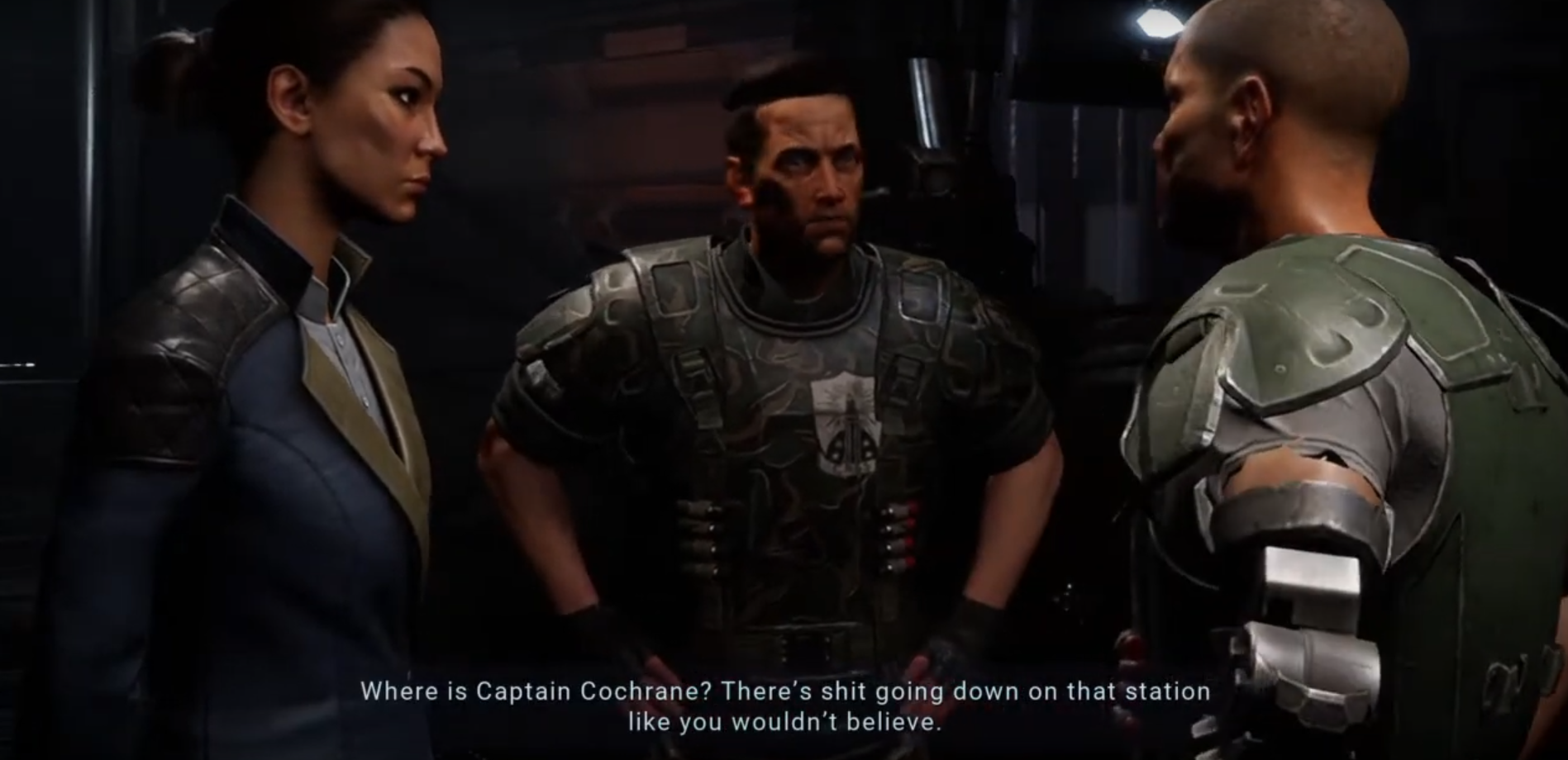
My first note of appreciation goes towards the ambition and efforts of Tindalos Interactive to take on such a big challenge with a restricted budget - making strategic decisions to mitigate costs and to put their money where their mouth is. While some of these decisions can be glaring on screen and remain hard to adopt in 2023, it's something most players would be ready to overlook for the thrill of the action promised by the pitch of ADD.
The two-hour sample of my experience with the game informs a greater concern than occasional gameplay and mechanics pitfalls - it flags a lack of understanding of storytelling, and more specifically character development, dialogue writing, talent direction, and the directing of cinematics – the very elements sustaining the player's interest to continue exploring the game for 15 hours (or more). These qualities are not something that solely relies on budget lines but also industry experience and a good understanding of dramaturgy.
Yet, where ADD suffers, the game compensates with extraordinary art direction and meticulous environmental design - creating all the visual tension and suspense missing in the spinal script. The conception of the tactical environment is sublime, honors the franchise with grace, and fits the Unreal engine perfectly.
An Original Alien Story
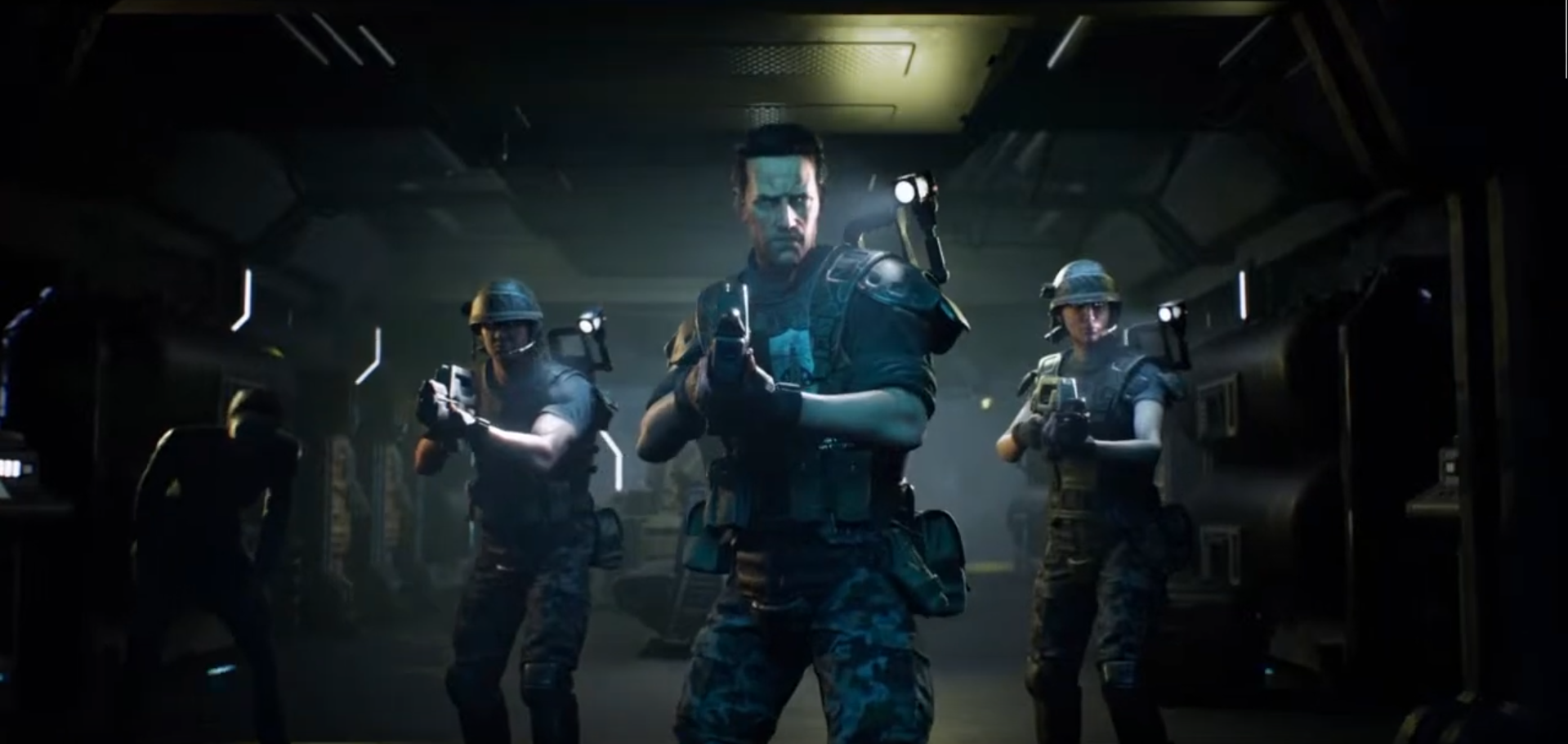
The storyline of ADD is well-anchored in the canonic world of Aliens - but it will not push the limit of this canon or provide answers to the franchise's questions, per se. ADD is an Aliens story operating in the same space as the Aliens novels of Titan Books, reflecting (or re-exploring) the existing world created by James Cameron (second opus of the Alien franchise). Fans of the IP are used to this franchise exploration - most of them are OK with it, and so am I.
As such, ADD evolves in an Aliens environment seen extensively since the late '80s, and duplicated in countless games. While I can take this setup on board and dig some excitement to return to yet another Hadley's Hope-esque colony, my expectations for surprise and originality would naturally land on characters and storyline - the one space where creatives can strive when framed by canonic limitations...
Unfortunately, this Cheyenne dropship never lands - at least not during the first two hours of gameplay (which should very much be dedicated to establishing character motivations, stakes, and the promise of a compelling story arc).
Game Structure
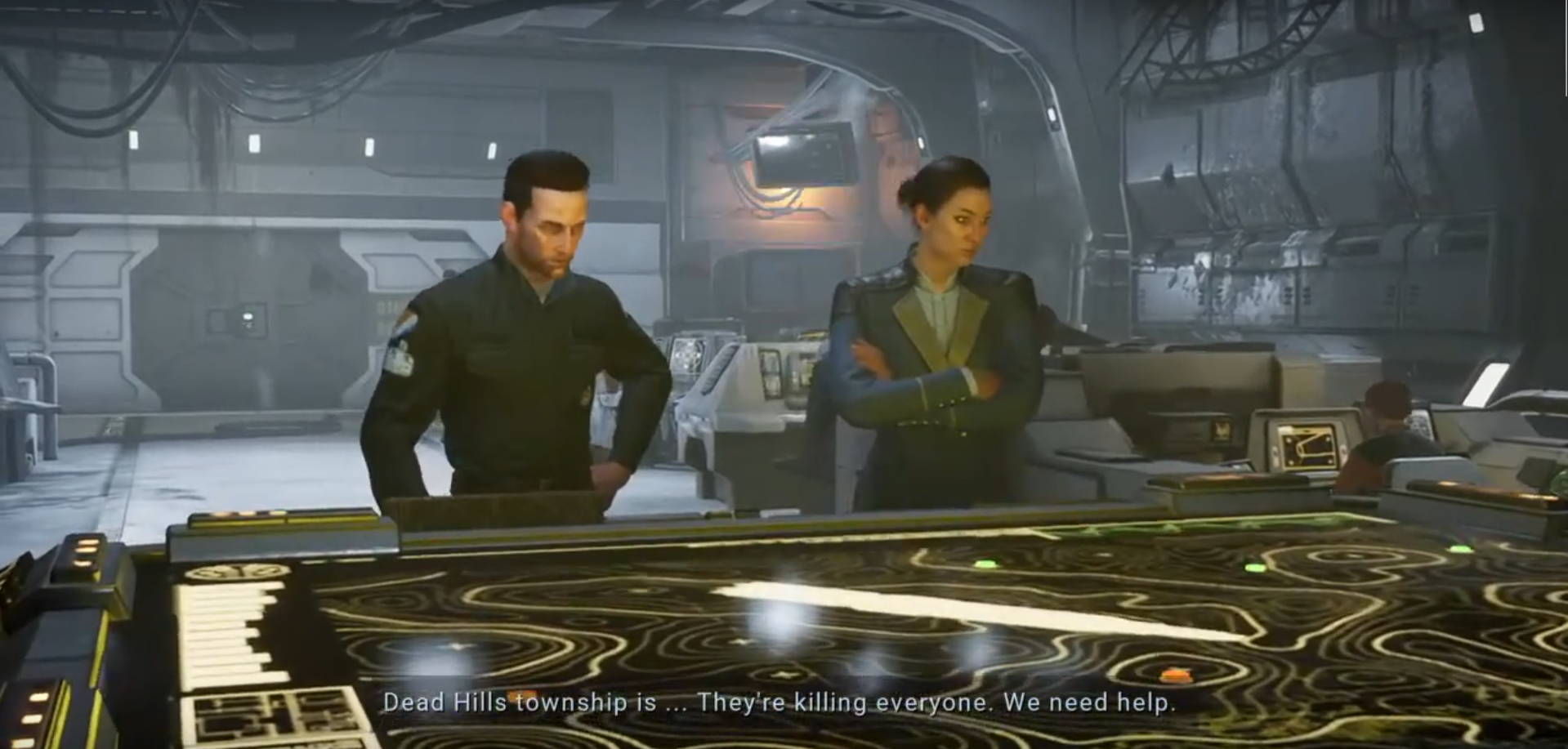
1 - Basecamp - Once past the opening of the game and basic tutorials, we settle with our headstrong protagonist, Deputy Administrator Hayes, taking the role of colonial marine operator in an attempt to rescue a colony from an imminent invasion of Xenomorphs.
Her duty includes selecting a dream team of marines, looking after their health and wellbeing, enabling the upgrade of weapons, and providing samples of biomass collected onsite to the dedicated scientists of the team.
This aspect of resource management will operate in preparation and debrief of every outing to the colony in peril. This phase of the game is provided via a menu offering to visit different parts of the Otago and interacting with key NPCs.
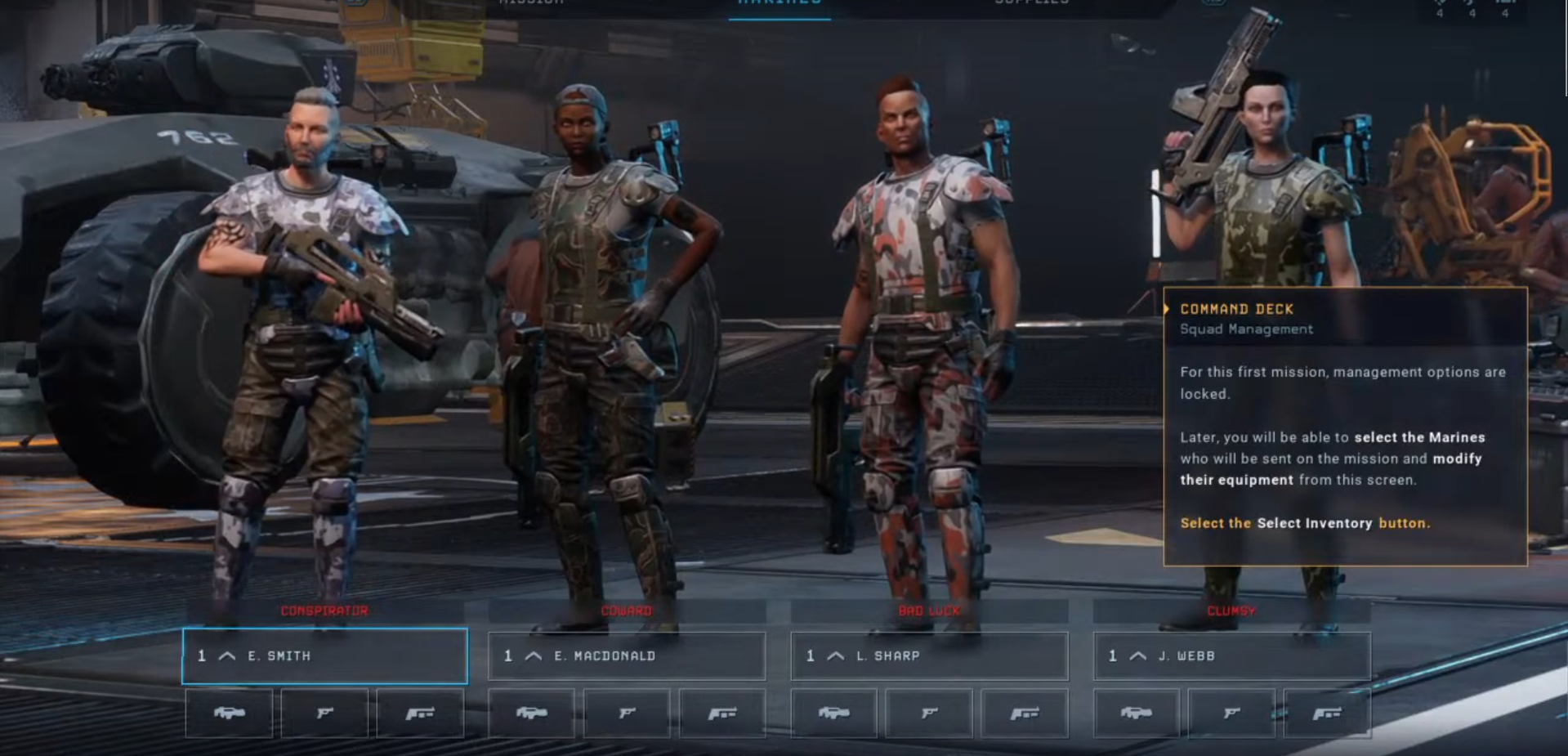
The selection of your dispatch team is very much borrowed from a sports simulator, selecting your team members before a match - it fits the purpose of the game, but also induces a high level of repetition and admin tasks that might feel underwhelming over time.
Yet, one element I particularly enjoyed as part of the Colonial Marines (CMs) selection is the 'flawed quality' assigned to each character, as this malus behavior is susceptible to compromising the mission at play once on the ground - it's a very nice touch and a good understanding of characterisation.
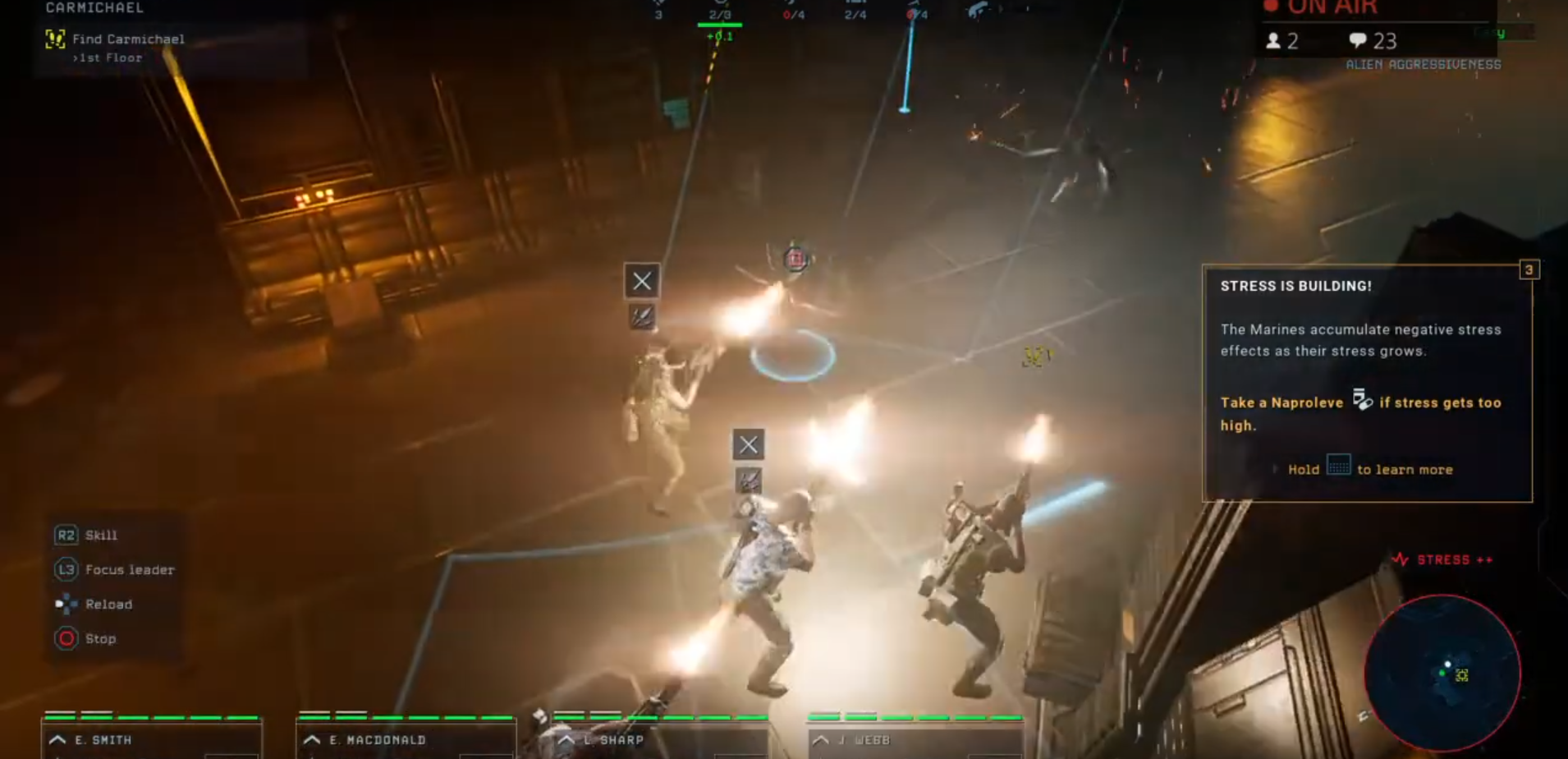
2 - Dispatch! Your troopers are now sent onto the ground, looking to rescue colonists, secure perimeters, collect datapads/gear/ammo, and clues to understand 'what the hell is going on down there!'.
Gameplay is fluid and well-managed, and I enjoy you can manage your crew as a whole by simple point and click. It's easy to assign individual tasks when needed, and to split the load of tasks among the crew. The automatic fire-response to threats in close proximity is reactive and entertaining to witness.
Things get a little more dicey when immediate reaction is needed, especially when confronting hordes of enemies - due to the high level of action possible, you will have to put the scene on 'tactical pause' to implement your choices - navigating in the UI to select CM, assign a weapon, select a range of action, and trigger action - it's something I have seen many times in other games of the sort, but I find this counter-intuitive to all the efforts invested to facilitate ease of gameplay thus far.
I found myself overwhelmed by the level of sub-category options available and the combo of keystrokes necessary to perform a certain action – after 4 hours of gameplay, I still struggle.
Narrative Structure and Devices
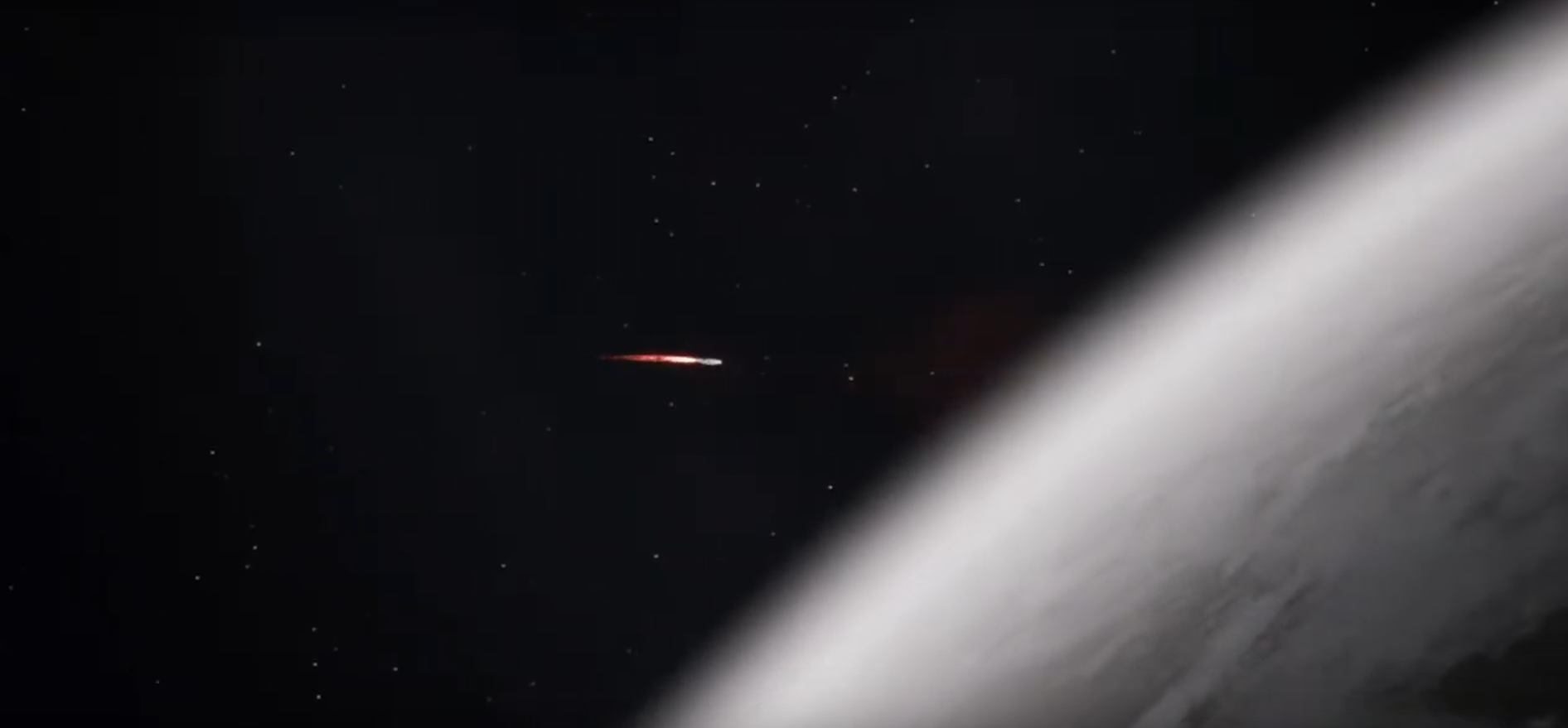
As previously established, ADD takes little risk in terms of storytelling - the first chapter adopts a very linear narrative structure, unsurprisingly.
While the introduction of the game shows aspects of the plot detached from the perspective of Deputy Hayes (including the betrayal of the Weyland-Yutani employee releasing the Xenomorph), this approach to plot-focused cut-scenes, as well as the thread of this particular plot point, is completely abandoned later in the game. Yet, I am expecting (or rather hoping) this loop will close later on.
As the prologue continues, the narrative focuses closely on Hayes as she attempts to survive the outbreak of the Xenomorph and a horde of facehuggers incubating her crew members - some efforts are invested in building visual tension, but nothing we haven't seen before.
However, at the time of destroying the fleet of spaceships in an attempt to prevent the contamination of the nearby planet, Hayes whispers 'It had to be done' in a voice-over overlapping the visuals of spaceships exploding in space (physics, am I right?) - this calm self-assuring inner-voice is contrasted with the chaos of destruction and the lost lives resulting from her decision - this was the best directorial decision of this 2-hour session as it brings us to the heart of Hayes emotions for the first time.
This moment shortly anticipates the reveal of the Xenomorph from the top of the data controller, now jumping on the ground, ready to confront her. Enters a troop of CMs, by a convenient use of a Deus Ex Machina.
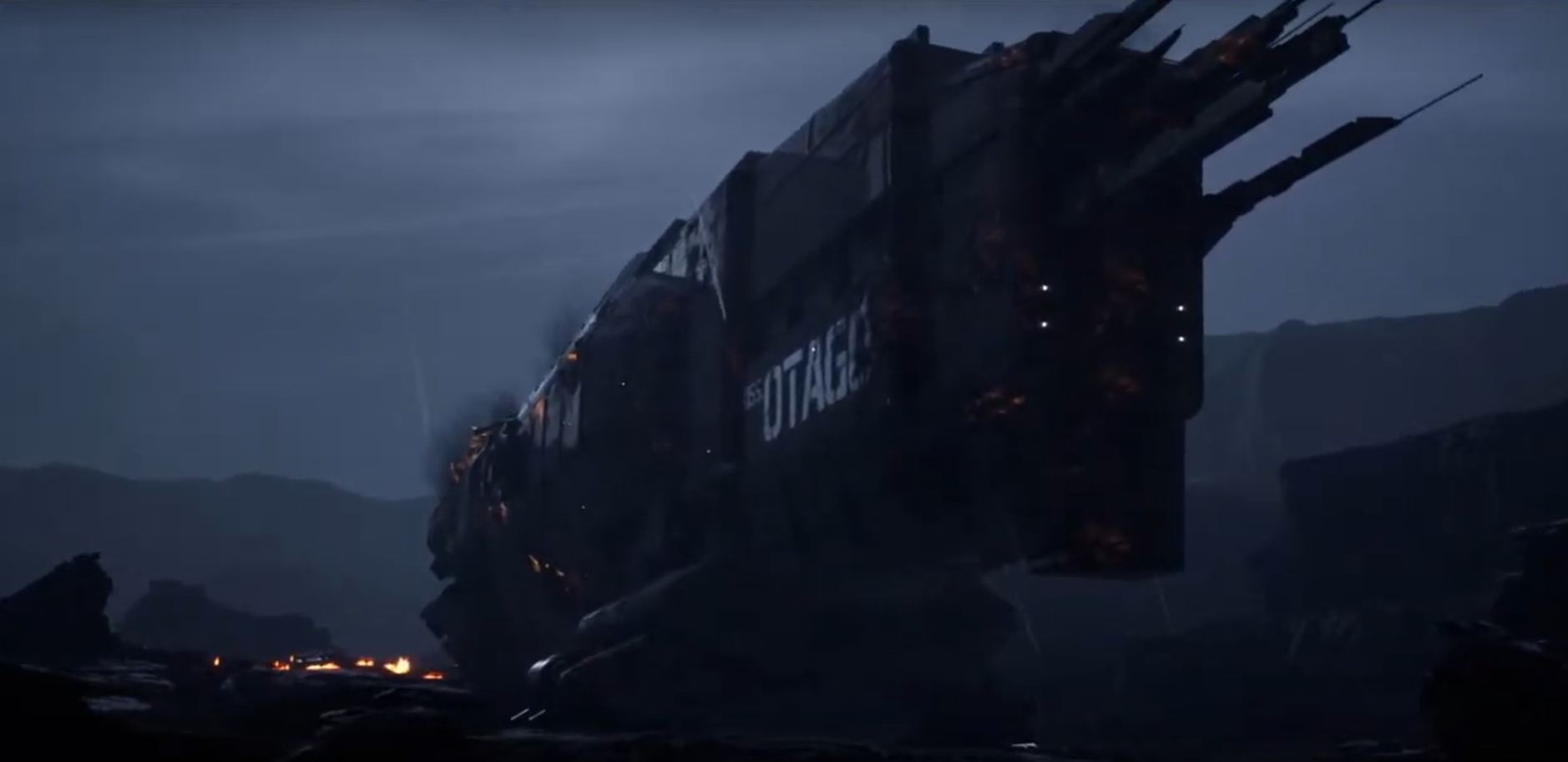
After a few hurdles, Hayes and the CMs reach the Otago, crashed on the planet below, and set up basecamp. It's now clear the Xenomorphs have started invading the colony, and the CMs will need to be dispatched to rescue the last souls of the colony (whilst collecting material for the repair of the spaceship).
Once the basecamp/dispatch action kicks in, the narrative remains mostly linear while offering occasional environmental clues hinting at past encounters, intel from datapads, video surveillance of other areas, information via datalogs, and more context about the invasion provided by the rescued colonists on the cusp of imminent death.
Occasionally, Hayes interacts via radio with the MCs to provide extra intel or confirm safe passage in certain areas, offering a more omniscient POV to the situation on the ground. On very rare occasions, a cinematic is triggered, which primary purpose is to draw focus on certain details of the scene - but that's about it.
As such, nothing truly original or ground-breaking. In fact, the lack of originality in narrative structure and storytelling is limiting any further creative attempts at the risk of being dissonant with what has been established so far.
Thematic Exploration
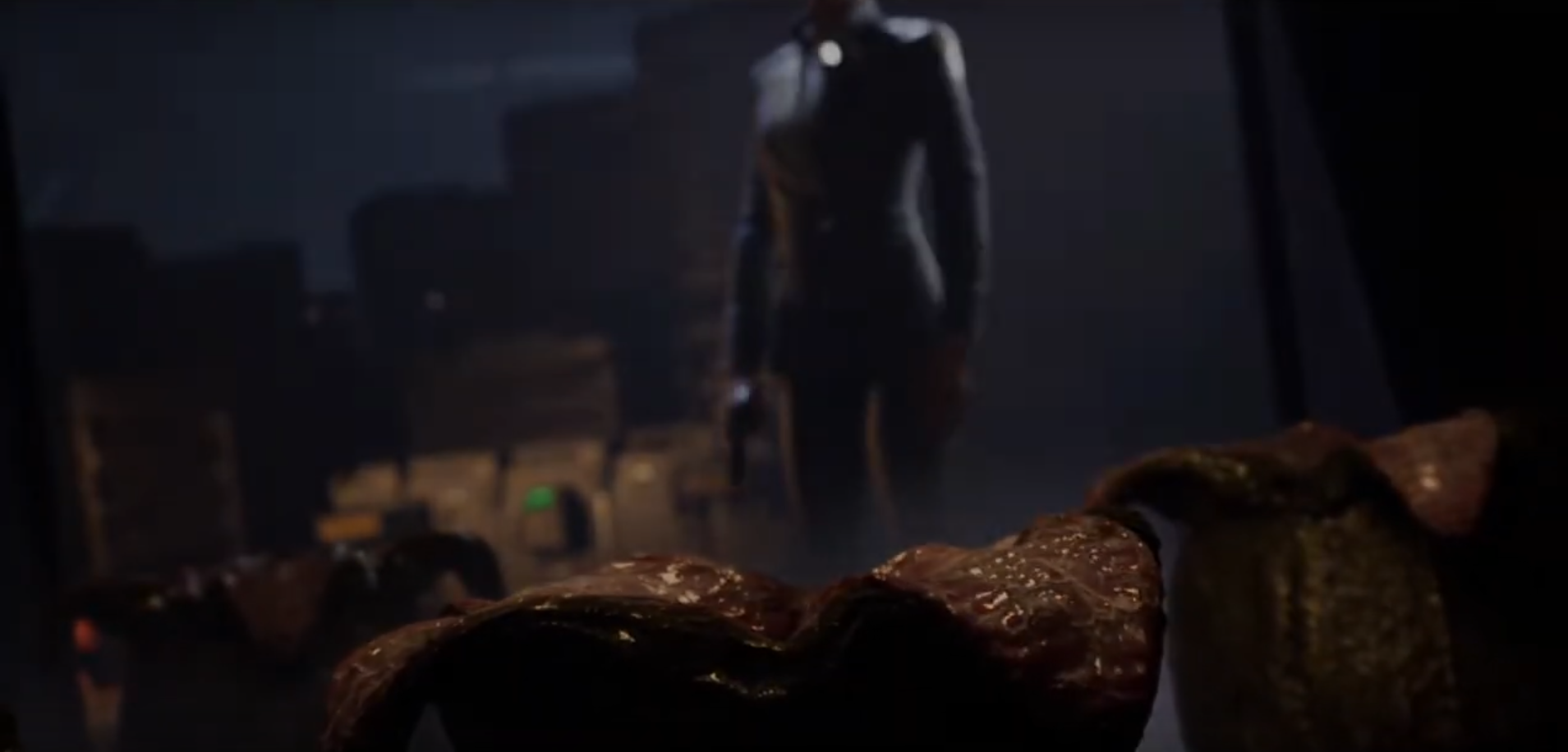
While conflict and emotionality is sacrificed for action and spectacle, ADD remains well aligned with all the classic themes you would expect from Aliens, including isolation, survival, and cosmic horror.
Other Aliens trademark themes such as corporate corruption, team betrayal, unethical bioengineering are also very much present in the first instance of the game.It would be fair to say ADD is efficiently re-investing the elements that have made the success of the franchise so far.
Character Development

While the game is promoted as a tactical simulation, it should not overlook storytelling and character development. Using the narrative solely as a plot engine to funnel missions onto the map is not enough in 2023.
Two hours in, I have no empathic connection with the lead character; her motivations remain nonexistent, and she is completely isolated from any genuine human emotion or root connection. I don't know why she cares - or why I should, by direct extension.
Besides a couple of instances of resistance towards leadership, a moment of self-reassurance when destroying her fleet, and a lie covering her tracks, she seems causation-proof. Nothing is triggered, moved, or changed as a result of this very dramatic opening. I am hoping to find some sort of emotional resonance, empathy, vulnerability, or relatable sentiments in the next segments of the game.
Environmental Storytelling
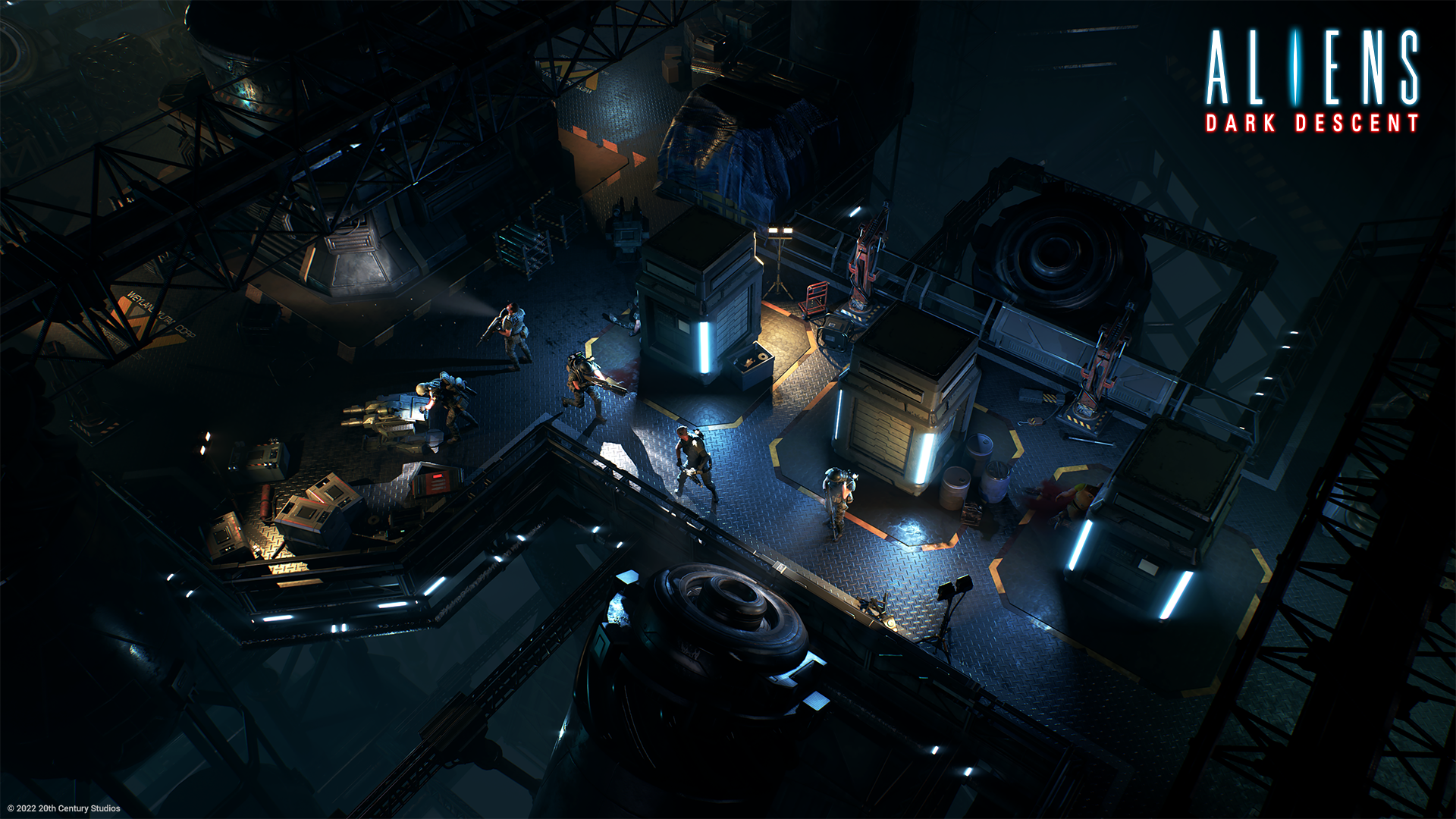
This is where the game excels. The work and talent invested in environmental design are phenomenal, and what makes ADD very special.
The level design, multi-layered map, atmospheric and light effects, and the sound experience have been incredibly well-managed - the art direction is simply splendid and makes ADD worth buying.
Every opportunity is taken to build visual tension, suspense, and to tell the story of the invasion spreading in the colony – it's very well executed.
Narratology Perspective
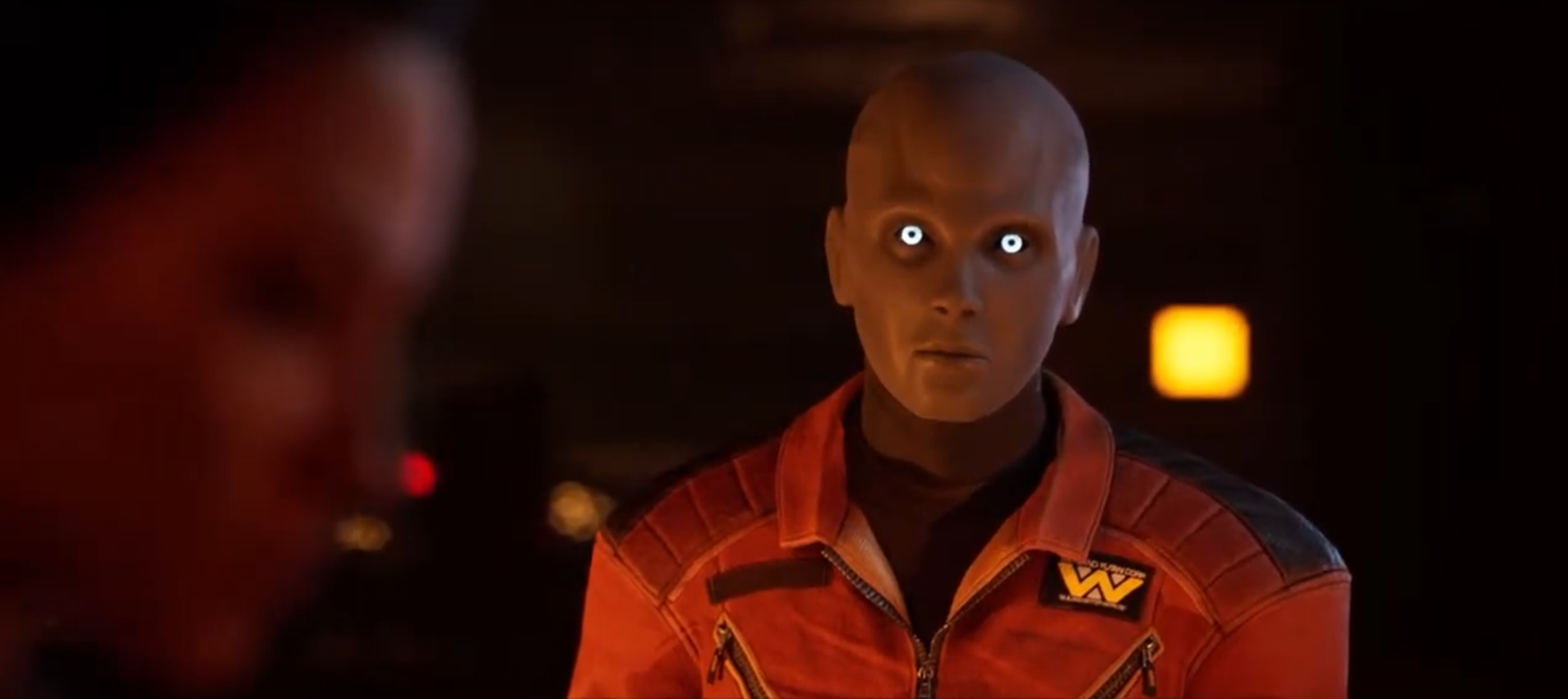
The alignement of the narrative and game mechanics is solemenly designed to serve a high level of action and entertainement – however, this approach provides a deservice for storytelling, character development and player agency. In other words, the intentions of ADD are very clear from a developper perspective, but the user experience has been overlooked.
It feels the studio is trying to show what they are capable of by packing too many events, UI elements, controller options all at once - loosing sight of the purpose of each scenes, game phases, and how the game is experienced at our end.
More often that not, less is more. A clear alignement between scene conflict and emotionality, player agency, and gameplay option is what is missing here. It is totally possible to blend effecitive storytelling and tactical simulation, but this harmony is not acheived by ADD.
Audience Alignement
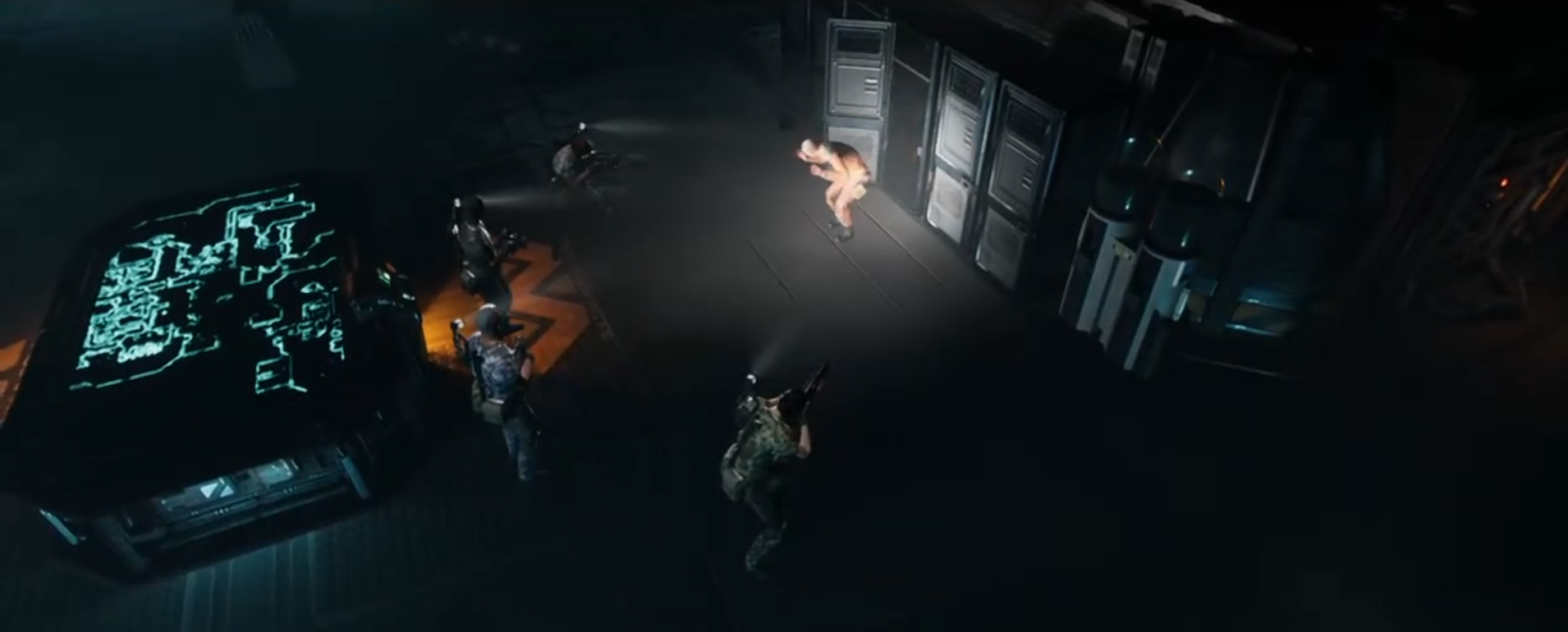
The low-ish PEGI rating and audience target of the game categorize ADD as a soft tactical-horror game - in contrast with the more recent Aliens games. It's clear the game wants to surprise, create tension, and jump scares - but needs to co-operate with the constraints of what is acceptable to a 15-year-old - which can be very restrictive for a franchise built on horror, occasional gore, and psychological warfare.
As such, a lot of reactions are downplayed to soften the blow (of a bullet shot point-blank in the head of a colonist about to give birth to a chestburster, for exemple). The isometric perspective and distant viewing of the scene also create a sort of emotional separation and a reminder we are playing a game – not so far from a dark Sci-Fi version of 'Sims' - this tends to create a 'scary-not-so-scary' feeling and a light pastiche of the genre it aims to honor.
Overall, ADD is a safe game to play with a strong focus on arcade-esque entertainment, as well as a good introduction to the franchise for newcomers into the Alien universe.
Conclusion
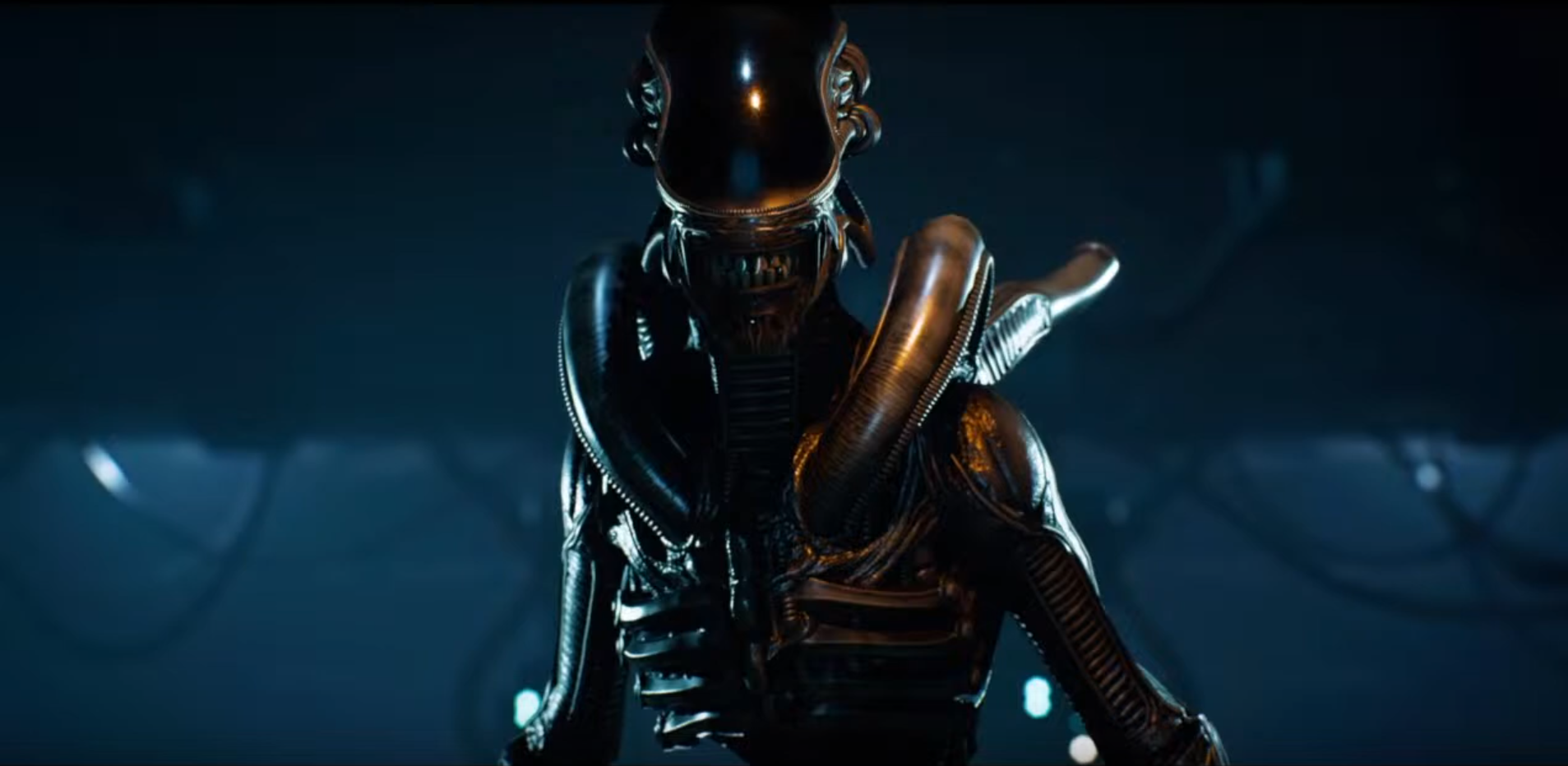
Overall, ADD knows what game it is - a tactical action game designed for a broad audience of players. While storytelling only operates from the stance of a plot engine to trigger action phases, ADD does latest extremely well.
Despite this imbalance, the game honors the franchise and delivers 'the goods' with a punch. The art direction of the game is a saving grace from the standpoint of storytelling, compensating for the fragility of the script and surface characters.
While I thoroughly enjoyed the game, I can't hide a certain disappointment with regards to the story as creating compelling, complex, and dimensional characters should never be an element to overlook - if anything, it would make the entire experience more compelling and interesting.
Regardless of criticism, ADD remains more than the sum of its parts and will answers the enjoyement of most Alien(s) fans out there. Tindalos Interactive has achieved something very special with ADD, adding an of indie touch to a franchise often delivered by the big names of the industry - I am very excited to see what they will achieve next!
Aliens: Dark Descent is a real-time tactics video game developed by Tindalos Interactive in collaboration with Disney's 20th Century Games and published by Focus Entertainment. Set in the Alien universe, the game was released for PlayStation 4, PlayStation 5, Windows, Xbox One, and Xbox Series X/S on June 20, 2023.
Game and Picture Credits: Aliens: Dark Descent © 2023 20th Century Studios., Game developed by Tindalos Interactive and published by Focus Entertainment. Focus Entertainment, Tindalos Interactive and their respective logos are trademarks or registered trademarks. All rights reserved.
